
As an historical institution, the Order of the Temple of Solomon is distinctly “Non-Masonic”. This neutral description objectively reflects the following facts:
(1) The chivalric Order of the Temple of Solomon of the Middle Ages never merged into the later fraternity of Freemasonry of the Renaissance;
(2) Freemasonry correctly does not claim to be an Order of Chivalry, as it does not possess the Fons Honourum to grant official knighthood in nobility;
(3) Freemasons do not receive chivalric knighthood nor such peerage title by achieving any Masonic “Templar” Degree; and
(4) Knights and Dames of the Templar Order do not become members of any Masonic fraternity by receiving chivalric knighthood.
Notwithstanding this clear separation of two distinct traditions, with different practices, Freemasonry and the Templar Order do share one significant moment of an intersecting point on the timeline of history, which created some shared affinities for ancient knowledge:
In the 15th century, surviving Templars taught stonemasons some Gothic building techniques and sacred geometry, which inspired the esoteric foundations of Freemasonry. For this reason, the higher levels of Freemasonry have honourary “Knights Templar” themed Masonic Degrees and Masonic Orders, named in tribute to the earlier Templars. Freemasonry was thus established approximately 330 years after the chivalric Knights Templar, making them separate organizations, each with their own unique heritage in its own right.
The positive tradition of Freemasonry is often mistakenly confused with a negative secret society generally known as the “Illuminati”. The infamous “Bavarian Illuminati” has sometimes infiltrated and misused the fraternity of Freemasonry, as well as several other respectable groups.
The 18th century “Illuminati” was created another full 330 years after the Masonic fraternity, such that authentic Freemasonry itself does not espouse nor embody any principles of that later secret society. As a result, the Order of the Temple of Solomon is a formidable 660 years older than the “Illuminati”, with no connection whatsoever to that subversive counter-culture, not even indirectly.
The restored Order of the Temple of Solomon offers its support to Freemasons and their Lodges, in friendship, to help restore and preserve the original, authentic and uncorrupted Freemasonry, by replenishing it with the full depth of the most ancient knowledge of the Temple of Solomon which originally inspired the Masonic tradition.
The Order recognizes authentic Freemasons as kindred spirits, who share an inspiration and passion for ancient esoteric knowledge of the divine mechanics of consciousness of the universe. That common characteristic of both Masons and Templars should be honoured, and is sufficient and compelling reason to ensure friendly and mutually supportive relations between them.
Therefore, with the modern restoration and public re-emergence of the Templar Order, Freemasons now have the historic opportunity to personally experience precisely the same interaction and mentorship from the direct continuation of the original Knights Templar of the 12th century, as the very first Freemasons enjoyed in the 15th century.


The teachings and traditions of Freemasonry are essentially comprised of symbolism, allegory and metaphor inspired by the ancient construction of the Temple of Solomon, which is applied as an esoteric representation for principles of personal transformation. Additionally, the concept of stonemasonry itself is considered symbolic of an intended stewardship role as “architects of society”.
This is related to the predominant Masonic requirement of belief in a Supreme Being (i.e. God), referred to by the symbolic title “Great Architect of the Universe”.
The use of distinctive ceremonial regalia in Freemasonry began as a new practice contemporary with its creation in the 15th century [1], with fraternal regalia serving as an additional dimension of symbolism supporting the esoteric teachings.
The famous system of “Degrees” of Freemasonry originated from the secular tradition of medieval craft Guilds, since the Guilds regulated the qualifications of all stone masons. Due to this professional regulatory context, Masonry developed independently as a network of Lodges. Each national or regional Grand Lodge is autonomous from those of other countries, Lodges of different jurisdictions do not necessarily recognize each other [2], and there is no single international governing body [3].
The Masonic tradition of sworn secrecy came from the legitimate quasi-legal “trade secret” needs of the professional craft Guilds of stone masons in the 15th century. Although modern Freemasonry no longer involves any trade craft requiring such protection, that practice is still valid for the sake of tradition. Indeed, that early legal doctrine of protecting “trade secrets” remains an important part of international intellectual property law to this day.
These points of historical background explain why the Masonic hierarchic Degree system and Lodge structure diverges from the monastic Knights Templar governance, which is based upon the centralized but egalitarian “Round Table” principle of the Templar Order.
This context also explains why Freemasonry is characterized by secrecy, in contrast with the Knights Templar principles of exercising public official authority for visible preservation and open public dissemination of esoteric sacred knowledge as the collective heritage of humanity.
The fraternity of Freemasonry emphasizes the metaphorical Temple of Solomon conceptually, and concentrates on the symbolic aspects of its physical construction by highly advanced stone work in ancient times. This is based upon teachings from surviving Templars during a period of 50 years (from ca. 1446-1496 AD).
In contrast, the chivalric Templar Order focuses on the total body of knowledge gained from its extensive archaeological excavation of the actual historic site of the Biblical Temple of Solomon [4] [5] [6] [7], during a period of nine years (1118-1127 AD) [8] [9] [10].
That exploration of the Temple of Solomon also recovered a library of sacred scrolls [11] placed there by the Essenes from Egypt [12] who had direct access to the Temple [13], which was the real Templar “treasure” of ancient knowledge [14] [15] [16].
The 12th century Templars attributed their famous stone work and building skills to their reverse engineering from that ancient site, supported by mentoring from Egyptian chivalric and priestly Orders.
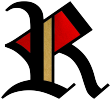

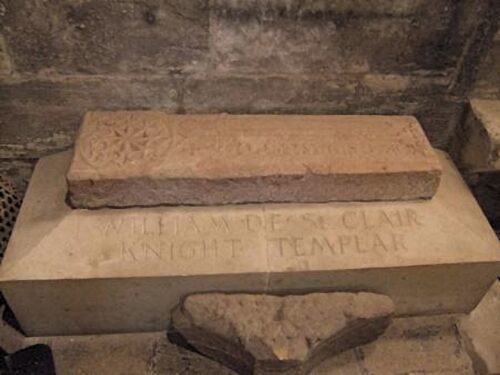

Gravestone of Baron William Sinclaire, Templar Grand Commander of Scotland, in Rosslyn Chapel (1484 AD)
Rosslyn Chapel in Edinburgh, Scotland, is famous as a “Templar” structure, although there has been some confusion as to whether it was designed by surviving Templars from the original Order, or whether it was solely “Masonic”. That issue is resolved by a factual balance, that its design and construction by the surviving Knights Templar was precisely the historical event that served to create the newly formed fraternity of Freemasonry.
Rosslyn Chapel was built under William Sinclair, Baron of Roslin (1410-1484 AD), a hereditary descendant from the first Grand Master of the Templar Order, Hughes de Payens, who was married to Catherine Saint Clair, the niece of Baron Henri Saint Clair of Roslin. This genealogy provides a direct connection between the founder of Rosslyn Chapel and the original Order of the Temple of Solomon. [17]
However, the Templar role of William Sinclair in leading the design and construction of Rosslyn Chapel was not based upon any hereditary authority, but rather was because he served as the appointed Grand Commander for Scotland of the surviving Templar Order.
Templar and Scottish cultural history reports legends that William Sinclair was a Grand Commander of the Templar Order. As this was over a century after the Templar persecution which spread across Europe, there would be no official records of this. However, this is confirmed by substantial physical evidence, literally set in stone:
Rosslyn Chapel contains the tomb of William Sinclair, with a gravestone bearing the prominent inscription: “William De St Clair – Knight Templar” [18]. The top stone features the “Escarbuncle” (eight pointed cross) symbol, a heraldic charge of King Fulk of Jerusalem as the founding Sovereign Patronage of the Templar Grand Mastery, which appears on the shields of the famous “Horsemen” seal of the Grand Mastery (1158 AD).
A stylized representation of the Templar “Horsemen” seal, depicting two Templar Knights on a single horse, also appears on the opposite wall from William’s tomb in Rosslyn Chapel [19].
A sculptured seal of Agnus Dei (“Lamb of God”), featured on the official Grand Mastery seal used in England (1160 AD) [20], is found at the top of a pillar by the same wall of William’s tomb [21]. The Lower Chapel contains another tomb marked only as “Knight Templar 13th Century” [22].
Modern Templar historians have found evidence that Lord William’s father “Henry Sinclair… wished to construct an edifice that would somehow ‘reflect’ the earliest achievement of the Templars; namely, their excavation of Solomon’s Temple on the sacred mound in Jerusalem.” Thus, Rosslyn Chapel was “a medieval representation of what the part of Solomon’s Temple excavated by the Templars… probably looked like”, and “is said to be a copy of Solomon’s Temple which was in Jerusalem.” [23]
Confirming that the design of Rosslyn Chapel was intended as a representation of the Biblical Temple of Solomon, and as a manifestation of its excavation by the Knights Templar, it contains a prominent Latin inscription:
“Forte est vinum, fortior est Rex, fortiores sunt mulieres: Super omnia vincit Veritas”, which translates as: “Strong is wine, stronger is a King, strongest are women: But Truth conquers all” [24].
This is the answer to an ancient Biblical question, the riddle asked by King Darius, for those who pass the test to receive his permission to rebuild the Temple of Jerusalem: “Who or what is the strongest?” [25] The answer, and its resulting construction, is thus reflected in Rosslyn Chapel.
Masonic and Scottish historians generally agree that the active use of Rosslyn Chapel by Templars, who were Knights and Dames of the surviving Templar Order, spanned the period of approximately 259 years from ca. 1466-1725 AD. This supports the conclusion of many historians, that the original Order had in fact survived the French persecution of 1307 AD, and continued to thrive as an underground network, serving as a hidden force of great positive influence, development and prosperity throughout Europe, leading humanity into the Renaissance.
The surviving Templars, preserving and continuing the original Order of the Temple of Solomon, needed to integrate all of their most important knowledge, and most advanced building technologies, sacred geometry and symbolism into the design of Rosslyn Chapel.
Because of great dangers from the persecution and suppression of the Order after 1307 AD, this Templar knowledge had to be preserved with secrecy. The construction of Rosslyn Chapel, which required contracting builders, thus presented a serious problem, in particular how to keep key elements of Templar knowledge secret, despite having to disclose and even teach many such secrets to the uninitiated builders.
For these reasons, as Masonic historians admit and explain, those surviving Templars were “forced to invent some way of securing the secrecy of those taking part in the building of [Rosslyn] Chapel. Using aspects of Templar belief and worship, William Sinclair created a ‘secret society’ to which his stonemasons were introduced.” This “started out as a form of ‘charter’ assuring the masons of continued patronage and exclusive privileges regarding their trade”. As a result, “the precepts of Freemasonry owe much to the survival of Templar and post-Templar thinking in Scotland.”
The original Templars “understood very well that at least a proportion of the [stone] masons constructing the edifice would find themselves party to mathematical and geometric secrets that [they] would not have wished to pass into the public domain. As a result, [they] tied these masons together into the tightest of guilds, replete with horrible oaths of retribution handed out to anyone who betrayed the trust of the new fraternity. … But these men were bound together by solemn oaths that endured for generations, since there had undoubtedly been advantages of preference, welfare and mutual aid written into the original concept of the pledge made” to the Templars.
This “proto-Masonic guild” was styled based upon “the workers who had once created Solomon’s Temple, of which Rosslyn was a partial copy. These matters conferred a ‘special status’ on the workers involved, and one that their sons and grandsons did not wish to relinquish.” [26]
It was in 1446 AD that Henry Sinclair received the founding charter from the Vatican of the Roman Catholic Church for the construction of Rosslyn Chapel. Templar historians therefore consider this to be the specific year when the fraternal society of Freemasonry was first established.
(Construction of the Chapel began later in 1456 AD, indicating several years of Templar training of the first Freemasons. The intricate stone carvings throughout the Chapel were made over a 40 year period, such that final construction was completed in 1496 AD.)
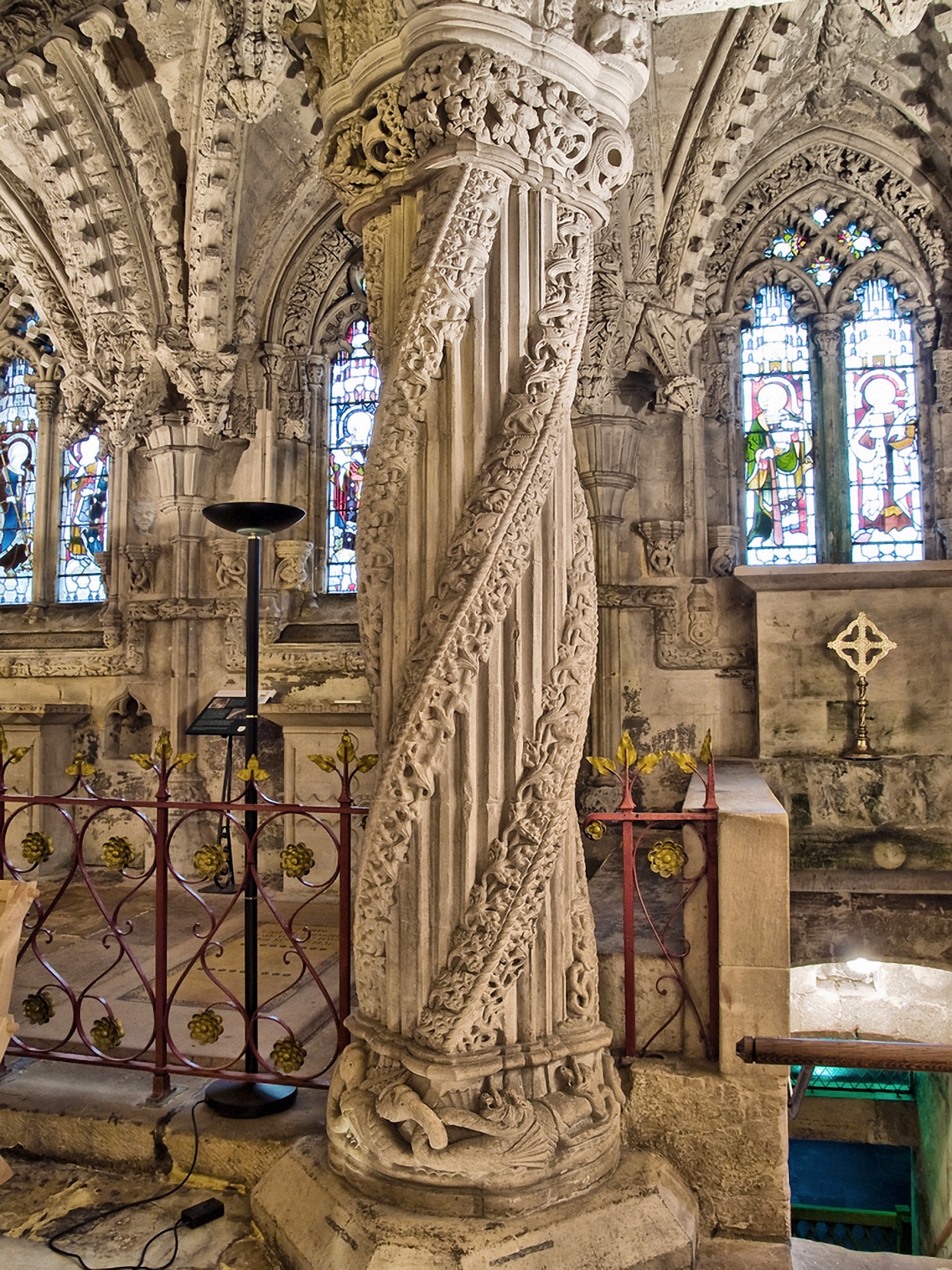

Chartres was designed by the Knights of the Temple of Solomon, and was constructed starting in 1194 AD by a Guild of stone masons which was created and named by the Templars, called the “Children of Solomon”. [27] In contrast with Freemasonry, having precisely the same Templar origins for the same purpose in the same way, it is interesting to note, that the earlier “Children of Solomon” never became an international fraternity, and never made any later claims relating to the Templar Order.
As further evidence confirming original Patronage of the Templar Order as the foundational authority establishing Freemasonry from 1446-1496 AD:
The Masonic leader William Schaw, Master of Works to King James VI of Scotland, wrote a Charter in 1602 AD for Sir William “Saint Clair” (Sinclair) of Rosslyn recognizing the right to Patronage over Scottish Masonry, which was officially granted to his son William in 1628 AD. That Charter was relinquished by the Sinclair dynasty over 100 years later to support formation of the Grand Lodge of Scotland in 1736 AD [28], upon which the 21st Baron Sinclair of Rosslyn was installed as its first Masonic Grand Master.


Notwithstanding genealogical connections to Grand Masters or 15th century hereditary Templars from nobility families who were prominent Patrons of the original Templar Order, it is important to delineate the difference between this cultural connection and any claim to succession of the actual 12th century chivalric Order of the Temple of Solomon:
Indeed, if succession of Fons Honourum rights to re-establish the Grand Mastery could pass to any and every hereditary descendant, from any and every Grand Master or Knight or Patron throughout the centuries, then every Order would become highly schismatic. Such an Order would quickly degenerate into a multitude of competing Grand Masteries, splitting into alternate “Orders” for an unlimited number of countries and regions. It would lose all centralized infrastructure necessary for preservation of its heritage, and for exercise of its official authorities.
Precisely for that reason, by the rules and protocols of chivalric law and customary international law, the legal continuity of the Knights Templar as an Order of Chivalry was vested exclusively in a direct lineal and constitutional succession from its founding Grand Mastery:
The Temple Rule of 1129 AD, as the founding Charter of the Templar Order, established its continuity strictly by lineage of service and meritocracy, and categorically excludes any hereditary claims to priority of succession:
It forbids any “pride or arrogance” (Rules 18, 19), and commands that “no person shall be elevated among you” (Rule 34), directly eliminating any “bloodline” claims to governance. Its later amendments (ca. 1150 AD) clarify that the Grand Mastery continues only through directly and lineally appointed “Grand Commanders” serving “in place of the Grand Master” (Rule 204), and is restored by “election of the Grand Master” by “the most prominent” Commanders (Rule 206). [29] [30]
The Temple Rule also established that the Order operates “according to canonical law” (Rule 9) as a “canonical institution” (Rule 274) [31] [32], such that Canon law also governs legitimacy of succession.
The Code of Canon Law mandates that an Order “survives”, as succession “of all the rights… devolves upon [any] member” continuing in active service (Canon 120, §2), and “arrangements for… rights… devolve upon the next higher [institution], always with due regard for the wishes of the founders… and for acquired rights” (Canon 123) [33].
This confirms that succession is solely by lineage of service, including intellectual property rights in the restored substance and heritage of the Order. It further excludes any hereditary claims, and provides that only a higher institution can officially “recognize” legitimacy of succession to “re-establish” the Grand Mastery of the Order by Sovereign Patronage.
During the 700 year period of abeyance of the Grand Mastery (1307-2007 AD), legitimacy of succession, by a direct and continual lineage of active service by meritocracy, could only be documented in the historical record by designated “Templar” lines of Apostolic Succession, which were recognized and recorded in official Vatican archives.
The Templar Grand Mastery was originally established (1118 AD) under Royal Patronage of the Kingdom of Jerusalem, and King Fulk of Jerusalem was a founding member of the Grand Mastery by serving as its Grand Regent. Accordingly, the only lineage of Fons Honourum of the relevant “higher institution” which could “recognize” succession and thereby “re-establish” the Grand Mastery under Canon law, was the Royal line of the Templar King Fulk d’Anjou.
The modern Order of the Temple of Solomon legally recovered, re-established and restored its original Grand Mastery to full and official legitimacy, by direct succession from Templar Apostolic lines, and also by “recognition” from the legalized King Fulk line of its founding Royal Patronage, fully reconnecting those two requirements during a seven year period (2007-2013 AD).
Therefore, as a matter of historical and legal fact, neither the Sinclair dynasty, nor any other hereditary line, has any claim to succession of the legitimate 12th century chivalric Order of the Temple of Solomon.
However, Freemasonry does have an important cultural connection to Templar heritage, and its own history of supporting the survival of the Order into the modern era, which is valued and respected. Fortunately, the original Order has been restored to full legal legitimacy, possessing the full depth and substance of its heritage, and is accessible to all Freemasons who desire a living connection to their authentic conceptual roots.


One important artifact in the historical record, called the “Kirkwall Teaching Scroll”, highlights that Freemasonry was a new and unique offshoot based upon the knowledge and mentorship of the Knights Templar, yet entirely separate and developing in its own independent direction.
The Kirkwall Scroll is a 15th century historical document, hanging on display in the Masonic “Lodge Kirkwall Kilwinning No. 38”, in Orkney, England. Mixed with symbols of 12th century Templar spiritual alchemy, the scroll prominently features extensive original Masonic symbolism, which was never used by the Knights Templar, and was not yet used in mainstream Freemasonry, but later appeared in 18th century popular Freemasonry.
The text on the Kirkwall Scroll appears to be written in 2nd century Western Middle Aramaic (the origins of later Biblical Hebrew) [34]. This distinctive writing script was explored as Enochian – the “language of Angels” attributed to the Biblical Enoch – first published in 1530 AD, and further developed as Enochian by the advisor to Queen Elizabeth I and alchemist John Dee in 1583 AD [35].
According to a Scottish legend of cultural history, in the 14th century Lord William Sinclair, Earl of Orkney, had formed a secret fraternity to protect the Templars, who had become an underground network only for survival, since they were persecuted by France in 1307 AD and released from the Vatican in 1312 AD.
The Kirkwall Scroll, which is 18.5 feet long and 5.5 feet wide, is composed of oil paintings on linen canvas, consisting of a central strip stitched together with two side strips: The center strip features the Altar of Solomon and Ark of the Covenant with Masonic and alchemical symbols, the left strip depicts routes of the Exodus from Egypt, and the right strip depicts migration to Europe and possibly the Crusades. [36]
Radio-carbon dating of the Kirkwall Scroll was conducted by the University of Oxford Archaeology Research Laboratory. The central panel with Templar and Masonic symbolism was dated to ca. 1465 AD (average of range from 1400-1530 AD), and the side panels were dated as 18th century, indicating restoration of the original 15th century scroll. [37]
These facts prove that the symbols, while not used in Freemasonry until the 18th century, did initially appear on and originated from this 15th century artifact, during the time period of the first Masons establishing Rosslyn Chapel under Patronage of the surviving Knights Templar.
Historian Andrew Sinclair established that “This knowledge was stored in the Scriptorium at Rosslyn Castle and it included priceless Templar artifacts relating to the Holy Grail. I believe the Kirkwall Scroll is a unique treasure map taken to Orkney for safekeeping by Earl William [Sinclair] after a fire which destroyed much of the original library.” Former Curator of Rosslyn Chapel, Judy Fiskin, confirmed the date of that fire: “It was documented as being at the time when William was Earl of Orkney and is quite provable.” [38]
Archivist of the Masonic Knights Templar in Scotland, Robert Brydon, explained: “The operative side of the craft [Operative Freemasonry], connected with the trade guilds and stone masons, was also strongly associated with the St Clairs, so there’s little doubt that the Kirkwall Scroll has very significant implications.” He also noted that “It’s quite feasible it’s a copy of an earlier document”. [39]
The Kirkwall Scroll is significant as perhaps the most tangible evidence proving that Masonry was independent as a unique offshoot since its earliest inception, and was mostly created for the Order of the Temple of Solomon to protect themselves as a formerly persecuted Order surviving as an underground network.
The 15th century Kirkwall Scroll contains a depiction of a Christian cross labeled with the inscription “ISH”, a version of the classic “IHS” in a different order, indicating that they are acronyms. Masonic tradition holds “IHS” to mean “Isis Horus Seb” from the Egyptian tradition which was highly valued by the Templars. The “IHS” inscription is used primarily by the original Knights Templar, and by the Jesuits. This substantiates a historical connection of some surviving Templars continuing through the later 16th century Jesuit Order.
The scroll’s newly invented inscriptions, by a newly created Masonic offshoot, express the knowledge and beliefs of the first Freemasons about the higher-level Templars who inspired them, evidencing that the original Templars were believed to be those same Knights who later were also protected by the Vatican Jesuit Order (established in 1534 AD).




In 1717 AD, with the creation of the Grand Lodge of England, the majority of Masonic fraternities officially shifted from Operative Freemasonry to a new form as Speculative Freemasonry. This involved fundamental and controversial changes to the Masonic constitutions and ceremonial rituals used around the world. [40] This event is generally viewed by Masonic scholars as the “Birth of Modern Freemasonry”.
Therefore, despite the 15th century Templar origins of Masonry, the majority of mainstream modern Freemasonry is really an 18th century tradition, which is thus disconnected from its original Templar roots.
In 1782 AD, the Masonic “Congress of Wilhelmsbad” in Germany, confirming that “Speculative Masonry [is] conventional and the result of modern thought”, came to the “determination that [modern] Freemasonry was not essentially connected with Templarism, and that, contrary to the doctrine of the Rite of Strict Observance, the Freemasons were not the successors of the Knights Templar.” [41]
The popular Masonic “Templar Theory”, which held that “Freemasonry was derived from Templarism, and that consequently every Freemason was a Knight Templar”, was thus rejected by Masonic authorities [42].
By 1914 AD, Masonic scholars officially declared such claim over Templarism to be “mythical… unsupported by the authority of history”, despite that claim having “vast influence in the fabrication of high degrees and the invention of continental Rites. Indeed, of all the systems propounded during the 18th century, so fertile in the construction of extravagant systems, none has played so important a part as this in the history of Masonry. Although the theory is no longer maintained, its effects are everywhere seen and felt.” [43]
Confirming that modern Freemasonry is disconnected from its Templar roots, and has no claim over nor succession from the medieval Templar Order, the Encyclopedia of Freemasonry in 1914 AD documented that the Templar Theory, which held “that all Freemasons are Templars, and that Freemasonry is a lineal successor of ancient knighthood, is now rejected as wholly untenable and unsupported by any authentic history. The only connection between knighthood and Freemasonry is that which was instituted after the martyrdom of [Jacques] De Molay, when the Knights Templars sought concealment and security in the bosom of the Masonic fraternity.” [44]
The authentic 15th century traditions of Operative Freemasonry have been preserved and continued by Ancient Rite fraternities, such as the Independent United Order of Mechanics (IUOM). The Mechanics Order was founded in 1757 AD in Lancashire, England by Act of British Parliament, and emerged throughout South America in 1877 AD, and in the United States in 1910 AD. (Note that the fraternal Order of Mechanics do not call themselves “Masons”, but rather “Mechanics”, to distinguish their unique Ancient Rite foundations.)


(The Order of the Temple of Solomon recognizes such Freemasons as “Cultural Templars”, who are welcome to join the restored medieval Order of Chivalry to earn legitimate knighthood in nobility.)
In Scottish Rite Freemasonry, the Ancient and Accepted Rite from ca. 1733 AD established a 13th Degree called “Royal Arch of Solomon”, and a 27th Degree called “Knight of Jerusalem” or “Commander of the Temple”, but nothing specifically called “Templar” nor styled as a Templar “Order”. Although its 33rd Degree is commonly described as the “Knights Templar” level of Freemasonry, that Degree is actually called “Inspector General”.
In York Rite Freemasonry, the Grand Lodge of All England created a fraternal Degree called “Knights Templar” in 1760 AD, above the 3rd degree of Master Mason and before Royal Arch [45]. This Masonic “Knights Templar” Degree, and the creation of local “Templar Lodges” of Freemasonry, was promoted by Thomas Dunckerley from 1790 AD, who was named “Grand Master” of the first “Grand Conclave of English Masonic Knights Templar” [46]. This Masonic Templar movement later emerged in America as the “Grand Encampment of Knights Templar” in 1816 AD.
The York Rite has an “Order of the Knights Templar”, as a fraternal “Masonic Order” (more correctly called a “Masonic Body”), which is very different from an Order of Chivalry. The Grand Encampment publicly states that its “Templar” Masonic Order is “the top ranking Masonic organization in the York Rite of Freemasonry”, and clarifies that “There is no connection between the ancient [Templar] Order and the modern [Masonic] Order known as the Knights Templar”. [47]
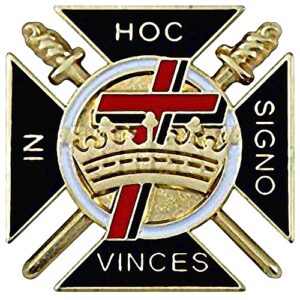

In the Temple Rule of 1129 AD, the Templar Order wholly rejected the “conquering” aspect of the Crusades: It criticized that the Crusades “did not do what it should… but strove to plunder, despoil and kill” (Rule 2), and that warfare should only “remove enemies from the land” (Rule 14), and not conquer any new lands. It commanded to “govern justly” and “take your rights” only as “established” by law (Rule 57), which prohibits military conquering [48].
The authentic motto of the original Templar Order has always been: “Non nobis Domine, sed nomini Tuo da gloriam”, meaning “Not to us Lord, but to Thy name give the glory”, expressing only serving the missions of God with monastic humility (from Old Testament, Psalm 115:1).



Perhaps most significantly, or at least most relevant to the present topic, this painting explains the relationship of Masonic fraternities relative to external and independent Orders of Chivalry.
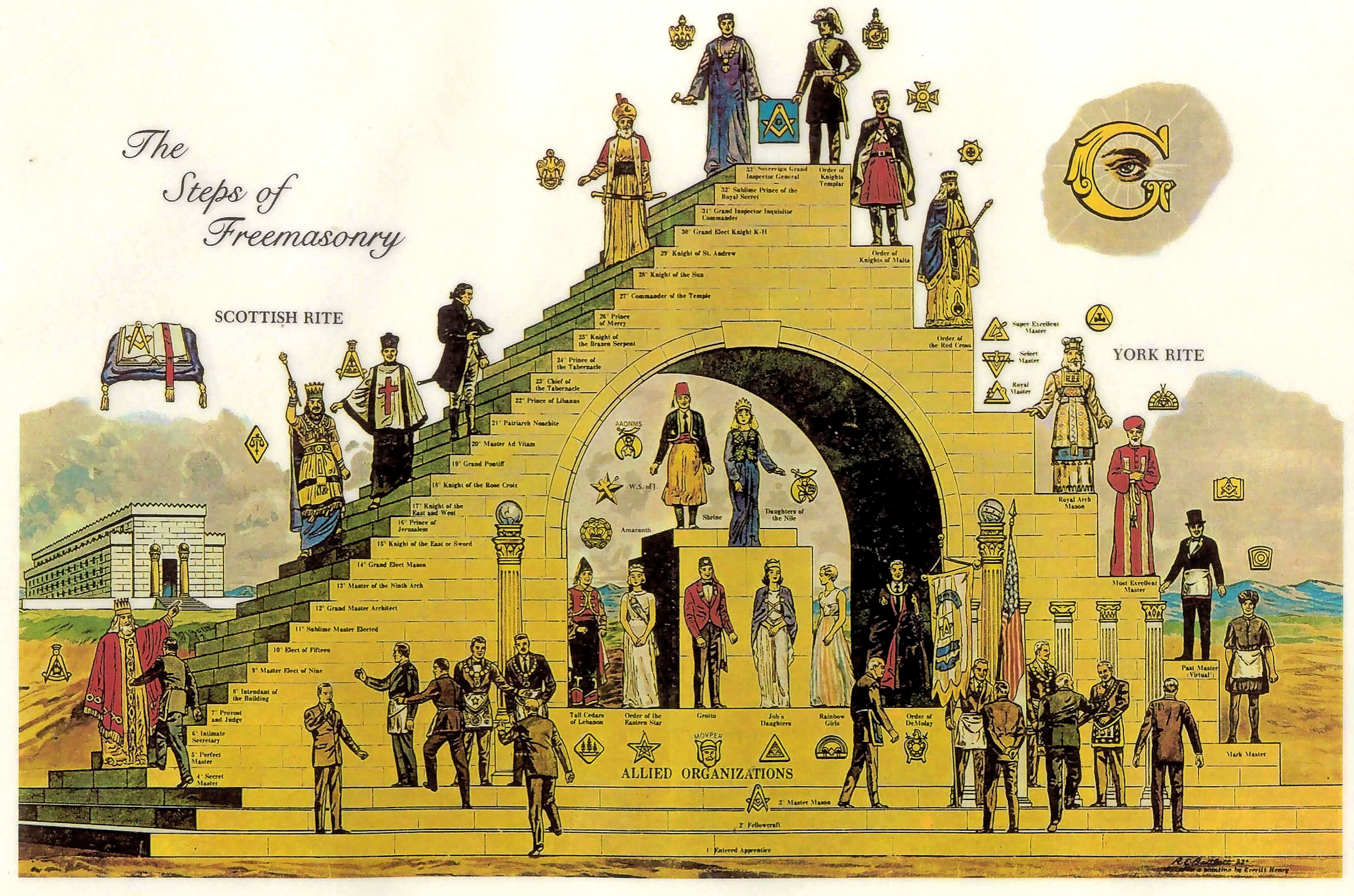

‘The Structure of Freemasonry’, in Life Magazine (08 October 1956), in the Masonic Library-Museum of Pennsylvania
Underneath the arch, in the center, several outside Orders are presented, labeled as “Allied Organizations”. Among them is a Shriner wearing a 20th century Egyptian Fez cap, Order of the Eastern Star, and Daughters of the Nile, showing that the Masons had learned the central importance of ancient Egyptian mysticism from the medieval Templars. On the bottom right of the Arch is a robed man, labeled as “Order of De Molay”, named after the famous “last” Grand Master of the Order of the Temple of Solomon before the 700 year abeyance of its Grand Mastery (until it was restored during 2007-2013 AD).
This indicates Masonic acknowledgement of the Knights Templar tradition as a separate and external Order, although it is a reference to another offshoot group that is allied with Freemasonry, while the chivalric Order of the Temple of Solomon is not affiliated.


At the top of the York Rite is the Masonic “Order of Knights Templar” (styled after the 12th century Order of the Temple of Solomon). The Templar figure of the York Rite uniquely occupies the highest level, on the same top step together with the “Grand” 33rd Degree of the Scottish Rite. This explains why the Scottish 33rd Degree is often described as a “Templar” Degree.
Confirming the interpretation that Templarism is considered the highest level of Freemasonry, the Encyclopedia of Freemasonry in 1914 AD revealed a key element of the Templar Theory of the Rite of Strict Observance (promoted in 1754 AD and rejected in 1782 AD), which held “that every Mason is a Templar, although not entitled to all the privileges of the [Masonic Templar] Order until he has attained the highest Degree.” [49]
This evidences that Freemasonry recognizes the Knights Templar as inherently being the highest possible level of sacred knowledge available to all Freemasons. It also confirms that the Order of the Temple of Solomon does not need any “degrees”, because all Templars are already at the highest level of initiation, equally all 33rd degree masters, by virtue of being members of the original medieval Order of Chivalry which embodies the most ancient sacred knowledge aspired to by all Freemasons.
Thus, Templar Knights and Dames of the Order do not need to join Freemasonry, because they are already established at the equivalent of the highest 33rd degree level, firmly rooted in the original 12th century tradition.
Moreover, all Freemasons can enter and even surpass that level by receiving knighthood in the Templar Order. New members of the Order are rapidly trained in 33rd degree knowledge, from the beginning, such that all further experience in the Order takes them far above and beyond what is normally available to most Freemasons within their lifetimes.
Many Freemasons have expressed some discomfort that Masonic Lodges generally do not accept women, such that their wives cannot participate, causing some frustration or complications in their family life at home. As women are full and equal members in the Templar Order, sharing chivalric missions as a Knight and Dame couple would thus be a refreshing breakthrough, adding a new dimension of mutual interest and bonding in the family relationship.
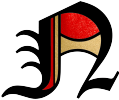

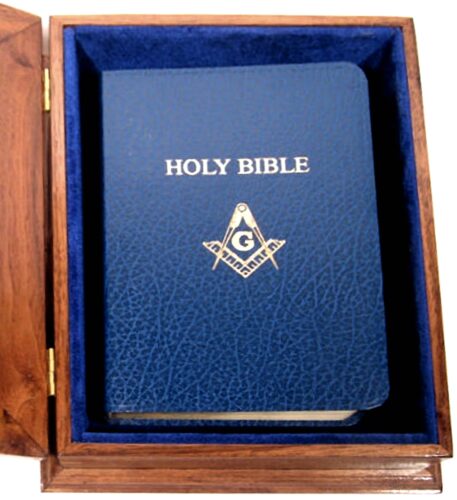

Authentic Freemasonry uses the Holy Bible and promotes spirituality
Numerous Freemasons around the world have mentioned, or at least reported rumours about, the existence of coveted, exclusive, secret “Above 33rd Degree” levels. However, authentic Freemasonry has only 33 degrees, and Masonry itself is not secret, as the complete libraries of its teachings are openly published in bookstores worldwide. Therefore, by definition, anything supposedly “above 33” is in fact not Freemasonry, but distinctly something else. That body of knowledge deals with the specifics of historical agendas against religion and against humanity itself, and the classical “battle between good and evil”.
Authentic Freemasonry officially uses and actively promotes spiritual use of the Holy Bible (traditionally the Authorized King James Version). Contrary to that dedicated purpose, the negative agendas of certain secret societies have opposed all religion, seeking to undermine all real spirituality.
The Knights Templar, of the original 12th century Order of the Temple of Solomon, possess the full range of “above 33rd degree” knowledge, having full understanding of the historical record evidencing specific negative agendas. More importantly, the Order has detailed information on the means and methods to cause such agendas to fail, backfire and implode, for the effective defense of human rights and freedoms.
Therefore, for the first time in history, all Freemasons now have the opportunity to fully enjoy the coveted “above 33rd degree” knowledge, firmly on the side of the historically proven “good guys”, the original Knights Templar, unequivocally remaining on the path of God.
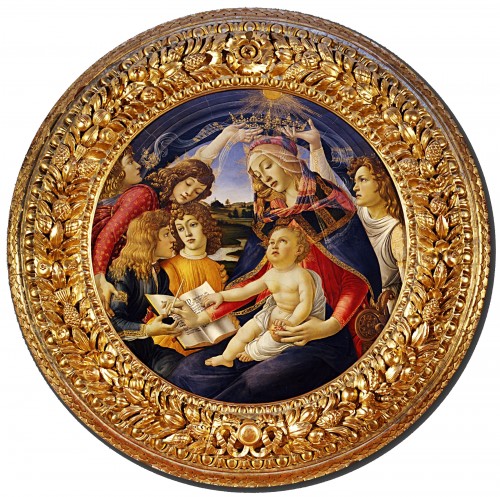

‘Magnificat’ by Sandro Botticelli (1480 AD) in Uffizi Gallery, Florence, Italy, capturing the spirit of the Renaissance
Any agendas to suppress traditional religion are inherently opposed to the teachings and values of Freemasonry from the Renaissance, and fundamentally violate all of the ancient doctrines and principles of the Knights Templar from the Middle Ages. Indeed, they would violate everything that was ever sacred throughout all of human history.
Now in the modern era, the 12th century Knights Templar, of the restored Order of the Temple of Solomon, call all Freemasons, Christians, Muslims, and all genuine spiritual religions, to join forces in chivalric unity – while preserving and respecting their different traditions – to defend the principle of religion itself, and promote religious rights and freedoms under the Rule of Law.
By this call to action, all fraternities, priesthoods and spiritual seekers are invited to join the Knights Templar in our mission to create the “New Renaissance” of the modern era. All who believe in goodness, tolerance, spiritual connection to universal divine energies, and humanity, are encouraged to join the restored Templar Order on this Holy Quest of historic worldwide importance.
Learn about Secret Societies Rejected by Templar core principles.
Learn about the Real Enemies of the Order which Templars oppose.
Learn about the Codes of Chivalry for Templar missions.
[1] John Yarker, The Arcane Schools, Manchester (1909), pp.341-342.
[2] Donald G. Campbell, Committee on Ritual, Handbook for Candidate’s Coaches, Grand Lodge of Free and Accepted Masons, California (2007), “The Master Mason: Irregular and Clandestine Lodges”.
[3] John Hamill & Robert Gilbert, Freemasonry, Angus (2004), Glossary, p.247.
[4] Titus Flavius Josephus, Jewish War, Rome (78 AD); Translation by William Whiston (1736), Loeb Classical Library (1926), Volume II, Book 5, pp.212, 217.
[5] Charles G. Addison, The History of the Knights Templar (1842), p.6, citing the document De Aedificiis by the 5th century Byzantine historian Procopius of Caesarea as “Procopius de Oedificiis Justiniani, Lib. 5.”
[6] Charles G. Addison, The History of the Knights Templar (1842), pp.4-5, citing a Vatican document by the 13th century Pope Urban IV (Jacques Pantaleon, 1195-1264), the Latin Patriarch of Jerusalem, as “Pantaleon, Lib. iii, p.82.”
[7] Collier’s Encyclopedia, Thomson Gale (1985), 1985 Edition, Macmillan Library Reference (1990), “Knights Templars”.
[8] Keith Laidler, The Head of God: The Lost Treasure of the Templars, 1st Edition, Weidenfeld & Nicolson, London (1998), p.177.
[9] Piers Paul Read, The Templars: The Dramatic History of the Knights Templar, the Most Powerful Military Order of the Crusades, 1st Edition, Weidenfeld & Nicholson, London (1999), Phoenix Press, London (2001), Orion Publishing Group, London (2012), p.305.
[10] Malcolm Barber & Keith Bate, The Templars: Selected Sources, Manchester University Press (2002), p.2.
[11] Karl Heinrich Rengstorf, Hirbet Qumran and the Problem of the Library of the Dead Sea Caves, German edition (1960), Translated by J.R. Wilkie, Leiden Press, Brill (1963).
[12] Minna and Kenneth Lonnqvist, Archaeology of the Hidden Qumran: The New Paradigm, Helsinki University Press, Helsinki (2002).
[13] Eric Meyers, The Oxford Encyclopedia of Archaeology in the Near East, Oxford University Press, Oxford (1997), Vol.2, pp.268-269.
[14] French author (unidentified), De la Maçonnerie Parmi Les Chretiens (“On Masonry Among Christians”), Germany (ca. 1750), quoting the 12th century Italian Abbot Joachim of Flora (Calabria), a friend of Richard the Lionheart, in: Frank Sanello, The Knights Templars: God’s Warriors, the Devil’s Bankers, Taylor Trade Publishing, Oxford (2003), p.223.
[15] Piers Paul Read, The Templars: The Dramatic History of the Knights Templar, the Most Powerful Military Order of the Crusades, 1st Edition, Weidenfeld & Nicolson, London (1999), Phoenix Press, London (2001), Orion Publishing Group, London (2012), p.304, quoting conclusions of historians from “the German Freemasons”.
[16] Michael Lamy, Les Templiers: Ces Grand Seigneurs aux Blancs Manteaux, Auberon (1994), Bordeaux (1997), p.28.
[17] Alan Butler and Stephen Dafoe, The Warriors and Bankers, Lewis Masonic, Surrey England (2006), p.33.
[18] Tomb of William Sinclaire, Collegiate Chapel of Saint Matthew (“Rosslyn Chapel”), at Roslin, Scotland; Maintained by the Rosslyn Chapel Trust, Edinburgh; Artifact at North Wall, inscription: “William De St Clair – Knight Templar”.
[19] Templar Horsemen Sculpture, Collegiate Chapel of Saint Matthew (“Rosslyn Chapel”), at Roslin, Scotland; Maintained by the Rosslyn Chapel Trust, Edinburgh; Artifact at South Wall, next to the Western window, stylized depiction of two Knights on one horse.
[20] Charles G. Addison, The History of the Knights Templars, Longman Brown & Green, London (1842), Preface, p.xi.
[21] Agnus Dei Sculpture, Collegiate Chapel of Saint Matthew (“Rosslyn Chapel”), at Roslin, Scotland; Maintained by the Rosslyn Chapel Trust, Edinburgh; Artifact at top of pillar, at North Wall of North Aisle, next to entrance from the visitor centre.
[22] Tomb of 13th Century Templar Knight, Collegiate Chapel of Saint Matthew (“Rosslyn Chapel”), at Roslin, Scotland; Maintained by the Rosslyn Chapel Trust, Edinburgh; Artifact in Lower Chapel at South-East corner, entrance next to Apprentice Pillar.
[23] Alan Butler and Stephen Dafoe, The Warriors and Bankers, Lewis Masonic, Surrey England (2006), p.36-37.
[24] “Truth Conquers All” Inscription, Collegiate Chapel of Saint Matthew (“Rosslyn Chapel”), at Roslin, Scotland; Maintained by the Rosslyn Chapel Trust, Edinburgh; Artifact at South-West corner, at top of archway connecting Prince’s Pillar with South Aisle, at top of stairway to Lower Chapel.
[25] First Book of Esdras (“Greek Ezra”), I Esdras, Chapter 3; Explained in: Encyclopaedia Britannica (2018), “First Book of Esdras”; Apocryphal work from original Septuagint Bible from Aramaic, excluded from New Testament by the Council of Trent (1563 AD) as it was more related to the Old Testament.
[26] Alan Butler and Stephen Dafoe, The Warriors and Bankers, Lewis Masonic, Surrey England (2006), p.37, pp.78-79.
[27] Louis Charpentier, The Mysteries of Chartres Cathedral, Research Into Lost Knowledge Organization with Thorsons Press, Wellingborough (1972), Chapter 18.
[28] Robert L.D. Cooper, Cracking the Freemason’s Code, Rider & Co, London (2006).
[29] Henri de Curzon, La Règle du Temple, La Société de L’Histoire de France, Paris (1886), in Librairie Renouard, Rules 18, 19, 34.
[30] Judith M. Upton-Ward, The Rule of the Templars, Woodbridge, The Boydell Press (1992); Dissertation for Master of Philosophy at Reading University; Including Hierarchical Rules, Rules 204, 206.
[31] Henri de Curzon, La Règle du Temple, La Société de L’Histoire de France, Paris (1886), in Librairie Renouard, Rule 9.
[32] Judith M. Upton-Ward, The Rule of the Templars, Woodbridge, The Boydell Press (1992); Dissertation for Master of Philosophy at Reading University; Including Hierarchical Rules, Rule 274.
[33] The Vatican, The Code of Canon Law: Apostolic Constitution, Second Ecumenical Council (“Vatican II”), Enacted (1965), Amended and ratified by Pope John Paul II, Holy See of Rome (1983), Canon 120, §2; Canon 123.
[34] Artifact Evidence: Kennicott Bible Collection, Manuscript (MS) No.3, “Humash with Onkelos” (Pentateuch with Aramaic translation), in Bodlein Library of Oxford University.
[35] Iohannes Augustini Panthei (Johannes Pantheus), Voarchadumia Contra Alchimiam, Paris (1530), Similarities to Enochian of John Dee in 1583 AD: pp.14-15; Preserved in Biblioteca Nazionale Centrale di Firenze (Florence, Italy).
[36] J.B. Craven, Kirwall Kilwinning Lodge No 38(2) and its Remarkable Scroll, Journal “Ars Quatuor Coronatorum”, Volume 10 (1897), pp.79-81; Including notes by G.W. Speth.
[37] Andrew Sinclair, The Secret Scroll, Sinclair-Stevenson, London (2001), Birlinn Limited, Edinburgh (2002), Chapter 15 “Science and Grace”, pp.250-253.
[38] Kath Gourlay, Princess Scroll Carbon Dated, published: Robert Lomas, Salford (2010).
[39] Kath Gourlay, Princess Scroll Carbon Dated, published: Robert Lomas, Salford (2010).
[40] I.R. Clarke, The Formation of the Grand Lodge of the Antients, Journal: “Ars Quatuor Coronatorum, Grand Lodge of British Columbia and Yukon (1966), Vol. 79, pp.270-273.
[41] Albert G. Mackey, An Encyclopedia of Freemasonry, The Masonic History Company, London (1914), “Wilhelmsbad, Congress of”, Volume 2, p.849.
[42] Albert G. Mackey, An Encyclopedia of Freemasonry, The Masonic History Company, London (1914), “Perfection, Rite of”, Volume 2, p.555.
[43] Albert G. Mackey, An Encyclopedia of Freemasonry, The Masonic History Company, London (1914), “Templar Origin of Masonry”, Volume 2, p.764.
[44] Albert G. Mackey, An Encyclopedia of Freemasonry, The Masonic History Company, London (1914), “Knighthood”, Volume 1, p.403.
[45] William James Hughan, Unpublished Records of the Craft, Kenning (1871), Part II, pp.16-17.
[46] Dr. Susan Mitchell Sommers, The Revival of a Patriotic Order: Knights Templar in England and York, Knight Templar Magazine, 02 January 2011.
[47] Grand Encampment of Knights Templar, FAQ Information, Texas (2018).
[48] Henri de Curzon, La Règle du Temple, La Société de L’Histoire de France, Paris (1886), in Librairie Renouard, Rules 2, 14, 57.
[49] Albert G. Mackey, An Encyclopedia of Freemasonry, The Masonic History Company, London (1914), “Hund, Baron Von”, Volume 1, p.353.
You cannot copy content of this page
